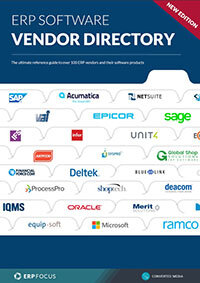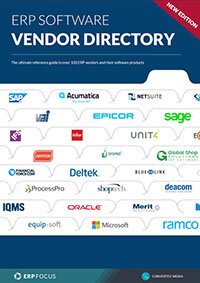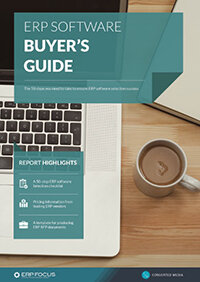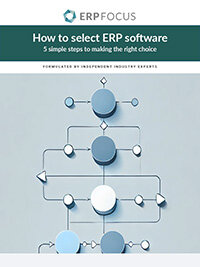What does the future hold for ERP and blockchain?
In the midst of various impacts relating to 2008’s housing collapse, an enterprising tech developer known as Satoshi Nakamoto conceived, and produced, a first iteration of the distributed ‘blockchain’ data model. Its original goal was to resolve a host of plaguing problems associated with the execution and management of secure, ‘asset-based’, transaction activities.
Blockchain: the basics
Ultimately, the genesis concept evolved to become what we, now, refer to as the ‘blockchain’ data infrastructure; or in more popular terms the ‘Bitcoin archetype.’
Essentially, the model can be represented as a globally-homogeneous database, where ‘transactions’ associate themselves with other related ‘transactions’, individually known within the model as ‘blocks.’
In turn, these ‘blocks’ extend themselves forward within one or more trusted data continuums. These ever-expanding groups of individual transactions then become, in simplest terms a ‘blockchain.’
Guide: find the right software for you with our completely up-to-date vendor directory
As the advantages of blockchain became more understandable, developers began to apply its protocols to traditional business tech, including ERP operations. Today, a number of resources-driven brands and consortiums including SAP, IBM, Hyperledger and others, are working toward practical prototypes that, if fully-articulated, could be deployed to alter the characteristics of ERP operations forever.
What Blockchain might mean for ERP
"It's a very hot topic right now," said Zulfikar Ramzan, associated with the Dell EMC Infrastructure Solutions Group, in a recent Computerworld article. "We are definitely getting a lot of inbound inquiries around Blockchain and its implication within enterprise environments… (currently) it's driven largely by the fact that when there's a new technology out there…people want to be buzzword compliant with the latest and greatest."
While applying buzzwords are fine, other organizations are considering blockchain in more practical terms, and specifically where ERP may directly apply. In the same article, Bas de Vos, Director of IFS Labs in Sweden suggested that the company’s commercial aviation clients could easily accept ERP-driven supply-chain and maintenance apps salted with the blockchain paradigm.
"It could create a single version of (an information) truth... (where) the underlying IT system goes through a simplified Blockchain…in order to (ensure that) all systems, instead of talking to each other, talk through the Blockchain," he said.
"That leads to much simpler integration between IT systems, although Blockchain (alone) will not replace ERP systems. However, it could be a complementary application that (may) simplify integration between parties, and reduce (overall) vulnerability because of its innate security.”
As one might expect however, it’s a lot easier to conceive of an end-to-end Blockchain infrastructure, as opposed to the current state of the technology. “It's not going to happen tomorrow," de Vos concluded. "I think simpler applications might happen tomorrow, but something as complex as an entire aviation chain - that's a couple years away."
Like anything else in today’s tech universe, methodologies, models, and systems drive themselves forward based on practical values produced by the adoption of one technology or another. In the case of BC, while the model may work out on in its own infrastructure, i.e. Bitcoin; the same approach may, or may not, play out in a generalized commercial environment. Consequently, we’ll just have to see what happens, but it’s an awfully interesting effort to pay attention to.
Free white paper

ERP Software Vendor Directory
Put the most comprehensive ERP vendor directory on your desk today

Featured white papers
-

ERP software buyer's guide
Save hours of ERP selection research with this comprehensive buyer's guide
Download -

ERP Software Vendor Directory
Put the most comprehensive ERP vendor directory on your desk today
Download -

How to Select ERP
Learn to select your ERP in 5 easy steps by following our expert's advice
Download
Related articles
-

28 cost elements to include in your ERP TCO calculation
With differing definitions and more hidden costs than you can shake a stick at, ERP TCO can be a ...
-

Secret KPI: Why Your ERP Implementation Team Matters More Than Software
Learn how Godlan ensures successful ERP implementation for manufacturers with proven strategies &...
-

Top ERP systems for small businesses
Which ERP solutions are best for small business needs? Information on features, scalability and m...

